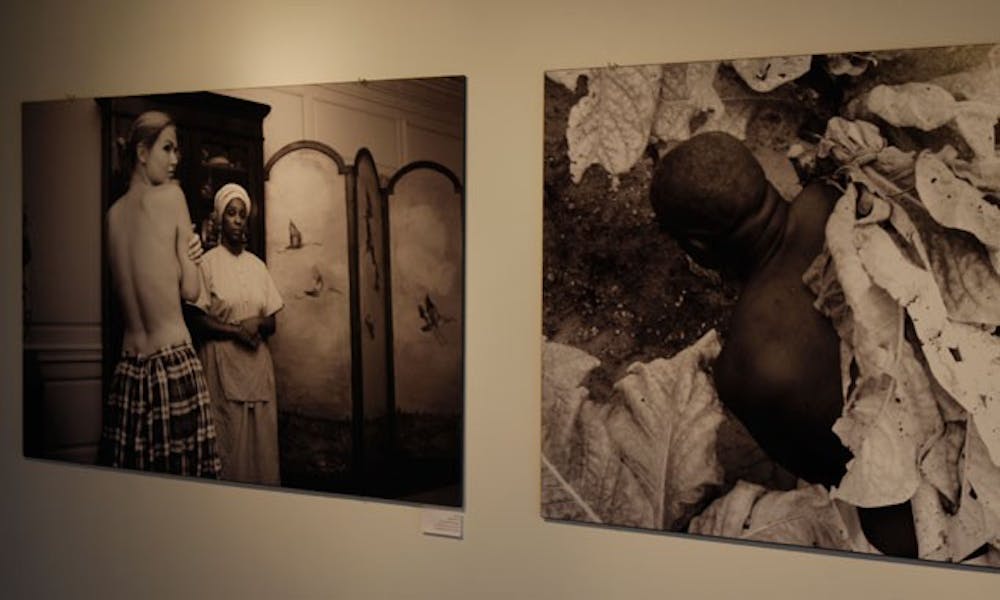“Separate but equal” is a theme that drives the newest exhibit at LabourLove Gallery in Golden Belt.
“Look Away Dixie Land” digs deep into Southern history and proves that the racial tensions of the past are still present. Artists Titus Brooks Heagins, McArthur Freeman and Dave Alsobrooks display their collections of paintings, photographs and mixed media pieces in the one-room gallery. The works are arranged into three separate but equally powerful sections, individually portraying different aspects of the greater overarching theme.
Duke graduate Heagins pays homage to the plight of slaves in his elegant, black-and-white portraits that occupy one-third of the space. Instead of overpowering the subjects, the chaos of the figures’ surroundings accentuates them. Raw images, such as bare torsos and backs, as well as the stark contrasts of light and dark, chaos and simplicity, are common in Heagins’ displayed works. Through this juxtaposition, the vulnerability and isolation imposed on the victims of slavery become clear. Even so, the simple titles of the pieces leave the concrete meanings ambiguous enough for viewers to create their own judgments and observations.
Moving past the clean lines of Heagins’ pieces, one is struck by a dazzling array of color and motion. Freeman’s paintings play host to a series of characters, ranging from Disney’s Pinocchio to Aunt Jemima, against a palette of candy-colored pinks, blues and yellows. This Seussical style unexpectedly furthers the disturbing and grotesque nature of the attitude toward blacks in the past. Each piece comprises layers upon layers of detail, encouraging viewers to delve deeper into the works as a whole.
Alsobrooks’ collection strives to expose the different faces of the Confederate flag—one centered on family life and Southern pride and the other on the division of a country and the treatment of African Americans in the South. From afar, the four “Southern Crosses” situated at the end of the room seem to be nothing more than a simple pattern arranged on different backgrounds. At second glance, however, one can see the montage of images that compose each flag. The various photos, simultaneously contradicting and supporting one another, convey an immense depth and complexity in all four of the designs. To aid the viewer, explanations of the individual scenes in each collage appear to the sides of the canvases. These descriptions offer further analysis of the irony in the works, as well as refreshing anecdotes of Alsobrooks’ life in the South.
This same irony is evident in all three collections and calls the viewer to challenge misconceptions of the present by reflecting upon African Americans’ mistreatment in the past.
“Look Away Dixie Land” will be on display at LabourLove Gallery in Golden Belt until Oct. 10. Admission is free.
Get The Chronicle straight to your inbox
Signup for our weekly newsletter. Cancel at any time.

